阅读:0
听报道
推文人 | 刘梦迪
原文信息:Bombardini, M., & Li, B. (2016). Trade, pollution and mortality in china (No. w22804). National Bureau of Economic Research.
一、问题提出
在过去三十年,中国经济飞速增长,出口持续扩张。与此同时,这种快速的经济增长也带来了一些担忧,即高收入带来的诸多收益可能因同样迅速增长的环境污染而减弱。那么,中国出口扩张如何影响污染水平呢?具体而言,一方面,外部需求的增加会增加污染出口,进而增加污染;另一方面,总体出口扩张提高了收入水平,进而减少污染。基于此,该文章通过构建理论模型和实证模型从上述两个机制讨论中国快速的出口扩张如何影响污染和健康水平。
在回答上述问题前,作者首先运用事件分析的方法检验了国外的需求冲击是否会影响我国的污染水平。2002年3月,在进行了大量前期评估的基础上,美国总统小布什宣布,将对从欧洲、亚洲和南美进口的大部分钢铁施加8%到30%的进口关税。这一举措在当时引起了轩然大波,遭到了国际社会的广泛谴责。欧盟首先向世贸组织投诉并采取了报复性保障措施,随后中国等亚洲国家也加入到抗议的浪潮中。2003年11月,WTO最终裁决,认为美国的钢铁关税措施严重违反了WTO的贸易原则,同时还对美国开出了20亿美元的罚单,这是当时WTO对成员国实施的有史以来最大力度的惩罚。布什总统在12月3日宣布取消钢铁保护性关税,欧盟和中国也随后取消了保护性关税。由于美国此次的关税调整主要是美国本国的政治因素而非中国的因素,因此提供了国外需求变动的外生冲击。如下图所示,研究发现在实行关税保护期间,相对于钢铁行业就业为0的城市,钢铁行业就业为平均水平的城市,API下降了2。
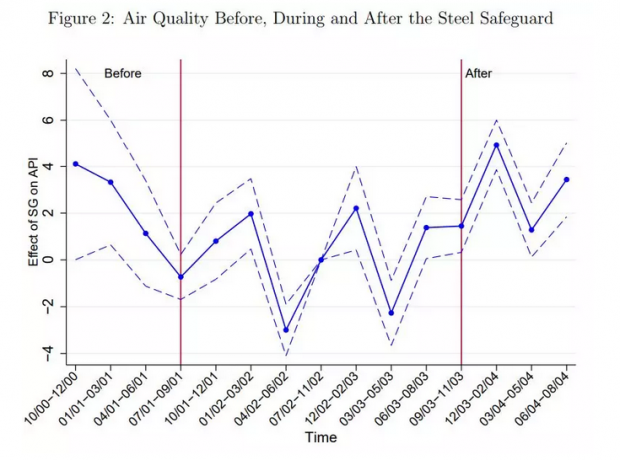
二、理论模型
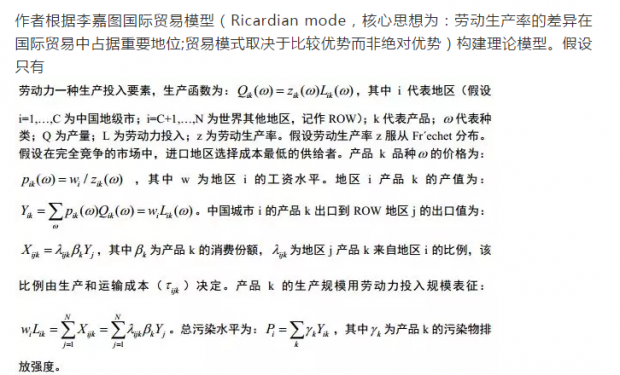
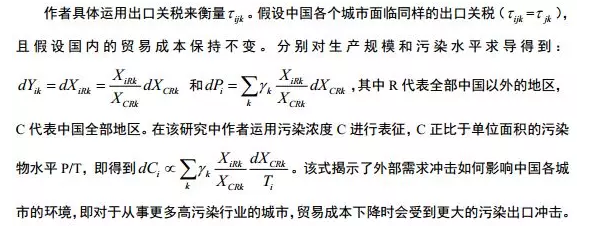
三、实证策略与数据
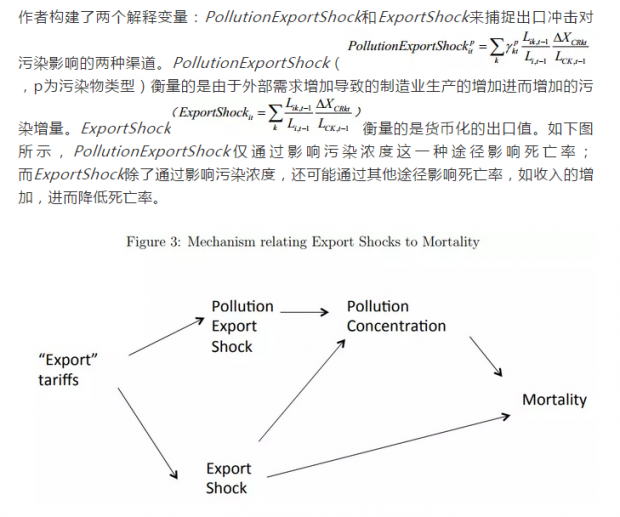
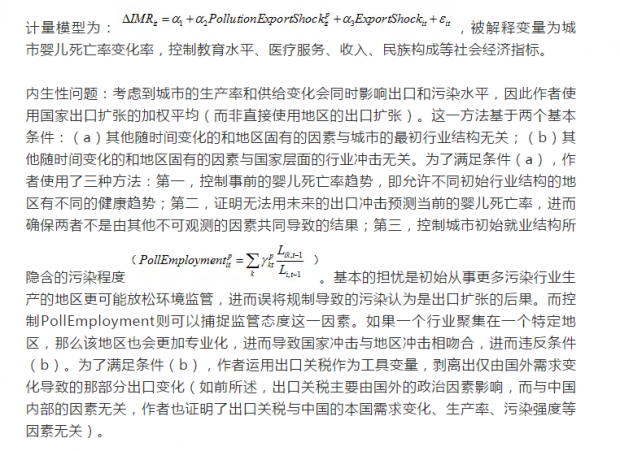
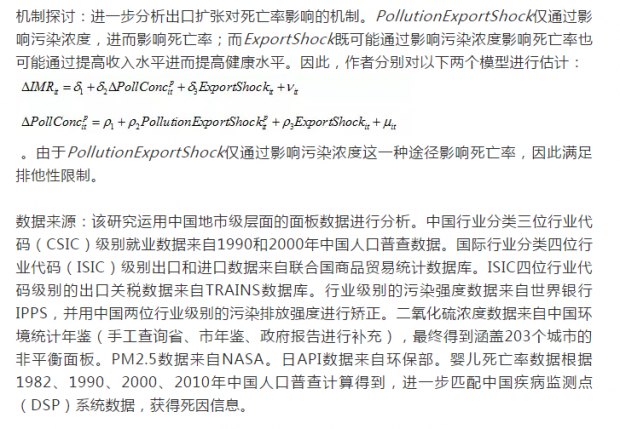
四、研究结果
基本结果表明,PollutionExportShock对婴儿死亡率有显著正影响。单位职工二氧化硫排放增加1磅,每千人婴儿死亡增加0.317-0.537;单位职工总悬浮颗粒物排放增加1磅,每千人婴儿死亡增加0.255-0.461;单位职工氮氧化物排放增加1磅,每千人婴儿死亡增加1.383-2.318。而出口值(ExportShock)在加入控制变量后多呈现不显著的结果。
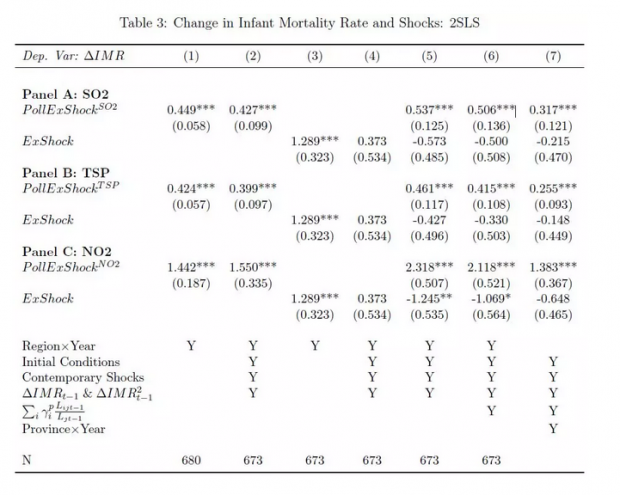
机制分析结果显示,PollutionExportShock对污染浓度具有显著正影响,PollutionExportShock增加一个标准差,二氧化硫浓度增加6.3微克/立方米。而ExportShock对污染浓度有负影响,ExportShock增加一个标准差,二氧化硫浓度下降1.9微克/立方米,但影响并不显著。
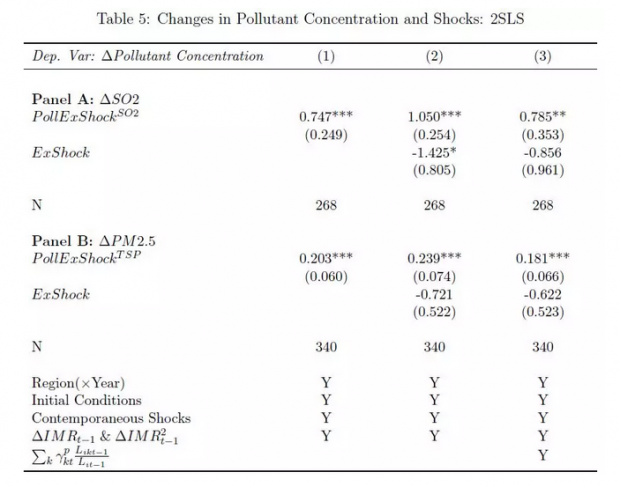
进一步分析污染物浓度对婴儿死亡率的影响,用PollutionExportShock作为工具变量(为方便与其他研究对比,(1)、(3)使用OLS回归)。研究结果显示,婴儿死亡率对PM2.5的弹性是2.1,对二氧化硫的弹性是0.9。
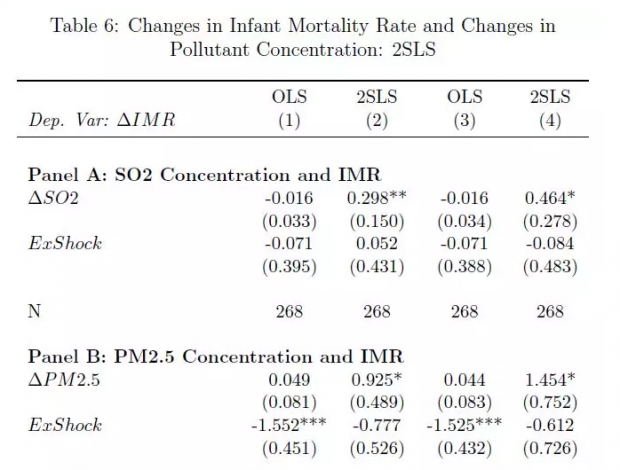
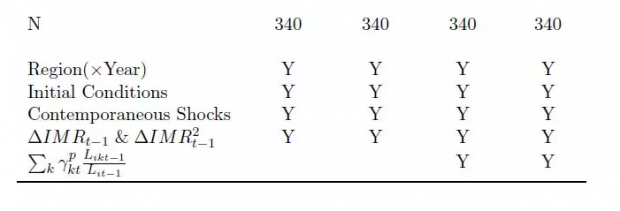
稳健性检验:作者做了一系列稳健性检验,包括用不同的指标衡量出口冲击,如用产值替代出口值;根据死因信息,用仅与关注污染物有关的疾病死亡率;考虑风向和邻居的污染溢出效应;用当期的婴儿死亡率对未来的出口冲击作回归;检验不同性别婴儿死亡率的影响;使用1-4岁儿童的死亡率作为被解释变量;考虑发电环节的间接污染影响;考虑进口冲击对污染的影响;加入更多控制变量,如高技能劳动力、国有企业占比、环境规制强度。
Abstract
Has the expansion in exports affected pollution and health outcomes across different prefectures in China in the two decades between 1990 and 2010? We exploit variation in the initial industrial composition to gauge the effect of export expansion due to the decline in tariffs faced by Chinese exporters. We construct two export shocks at the prefecture level: (i) PollutionExportShock represents the pollution content of export expansion and is measured in pounds of pollutants per worker; (ii) ExportShock measures export expansion in dollars per worker. The two measures differ because prefectures specialize in different products: while two prefectures may experience the same shock in dollar terms, the one specializing in the dirty sector has a larger PollutionExportShock. We instrument export shocks using the change in tariffs faced by Chinese producers exporting to the rest of the world. We find that the pollution content of export affected pollution and mortality. A one standard deviation increase in PollutionExportShock increases infant mortality by 2.2 deaths per thousand live births, which is about 13% of the standard deviation of infant mortality change during the period. The dollar value of export expansion tends to reduce mortality, but is not always statistically significant. We show that the channel through which exports affect mortality is pollution concentration: a one standard deviation increase in PollutionExportShock increases SO2 concentration by 5.4 micrograms per cubic meter (the average is around 60). We find a negative, but insignificant effect on pollution of the dollar-value export shocks, a potential “technique” effect whereby higher income drives demand for clean environment. We find that only infant mortality related to cardio-respiratory conditions responds to exports shocks, while deaths due to accidents and other causes are not affected.

话题:
0
推荐
财新博客版权声明:财新博客所发布文章及图片之版权属博主本人及/或相关权利人所有,未经博主及/或相关权利人单独授权,任何网站、平面媒体不得予以转载。财新网对相关媒体的网站信息内容转载授权并不包括财新博客的文章及图片。博客文章均为作者个人观点,不代表财新网的立场和观点。

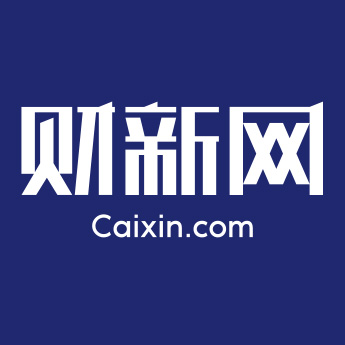
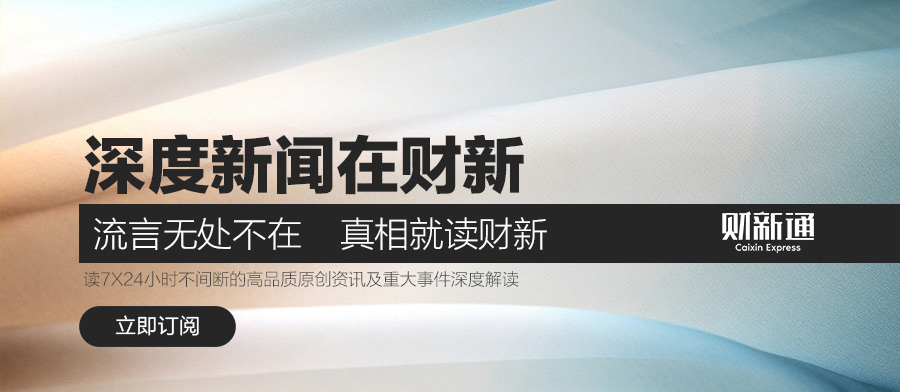
 京公网安备 11010502034662号
京公网安备 11010502034662号 